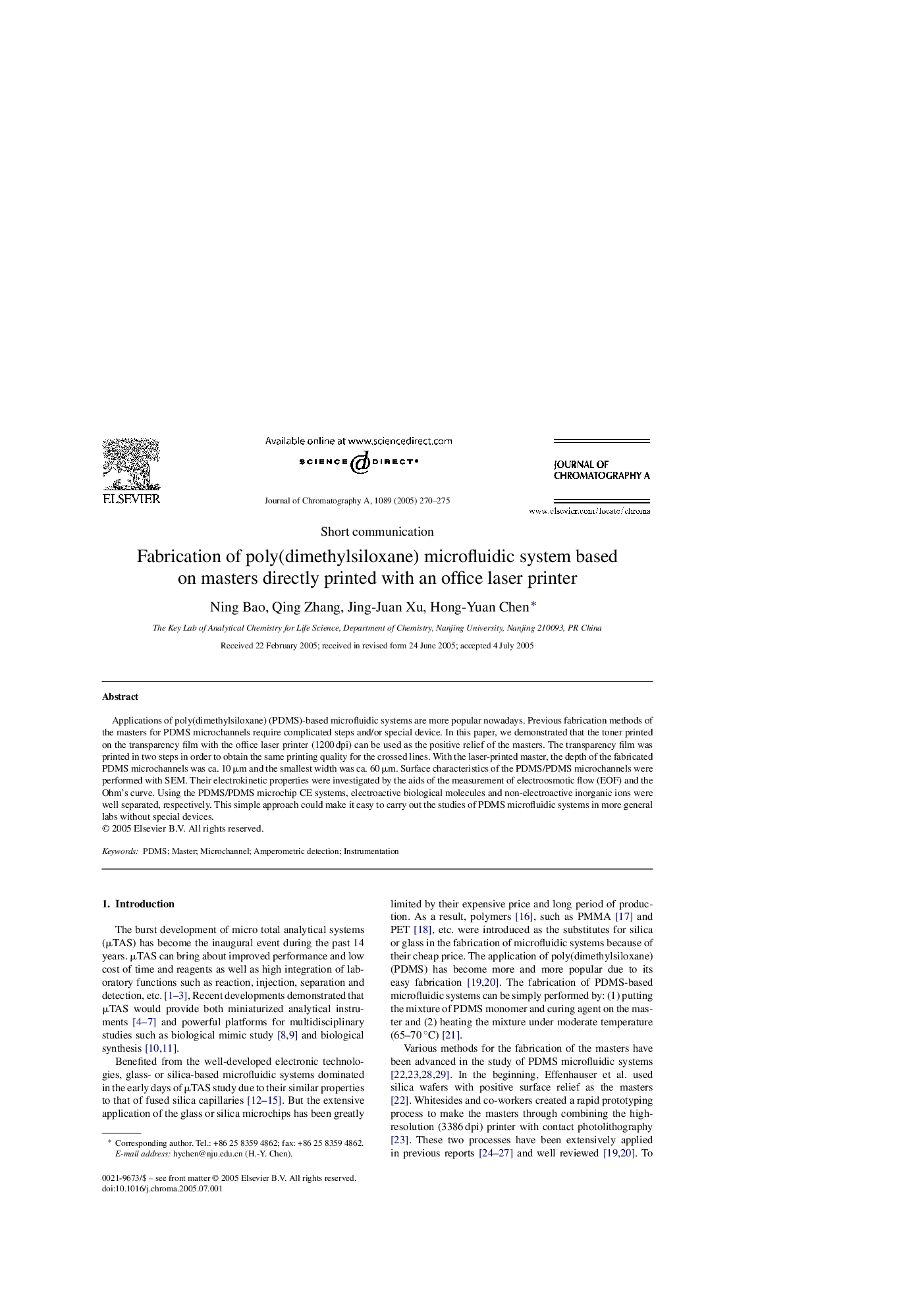| Article ID | Journal | Published Year | Pages | File Type |
|---|---|---|---|---|
| 9748742 | Journal of Chromatography A | 2005 | 6 Pages |
Abstract
Applications of poly(dimethylsiloxane) (PDMS)-based microfluidic systems are more popular nowadays. Previous fabrication methods of the masters for PDMS microchannels require complicated steps and/or special device. In this paper, we demonstrated that the toner printed on the transparency film with the office laser printer (1200 dpi) can be used as the positive relief of the masters. The transparency film was printed in two steps in order to obtain the same printing quality for the crossed lines. With the laser-printed master, the depth of the fabricated PDMS microchannels was ca. 10 μm and the smallest width was ca. 60 μm. Surface characteristics of the PDMS/PDMS microchannels were performed with SEM. Their electrokinetic properties were investigated by the aids of the measurement of electroosmotic flow (EOF) and the Ohm's curve. Using the PDMS/PDMS microchip CE systems, electroactive biological molecules and non-electroactive inorganic ions were well separated, respectively. This simple approach could make it easy to carry out the studies of PDMS microfluidic systems in more general labs without special devices.
Related Topics
Physical Sciences and Engineering
Chemistry
Analytical Chemistry
Authors
Ning Bao, Qing Zhang, Jing-Juan Xu, Hong-Yuan Chen,
